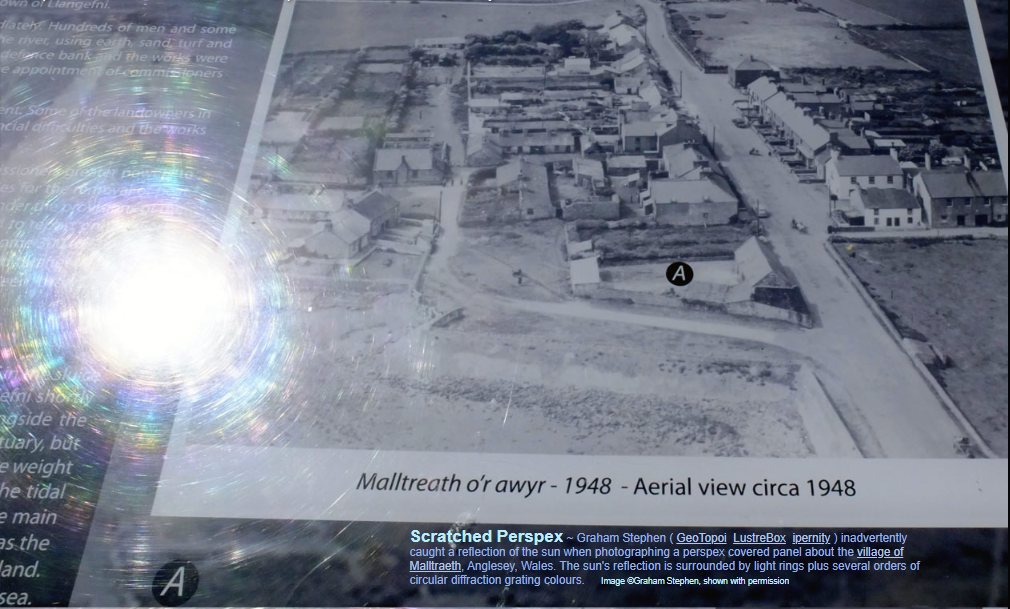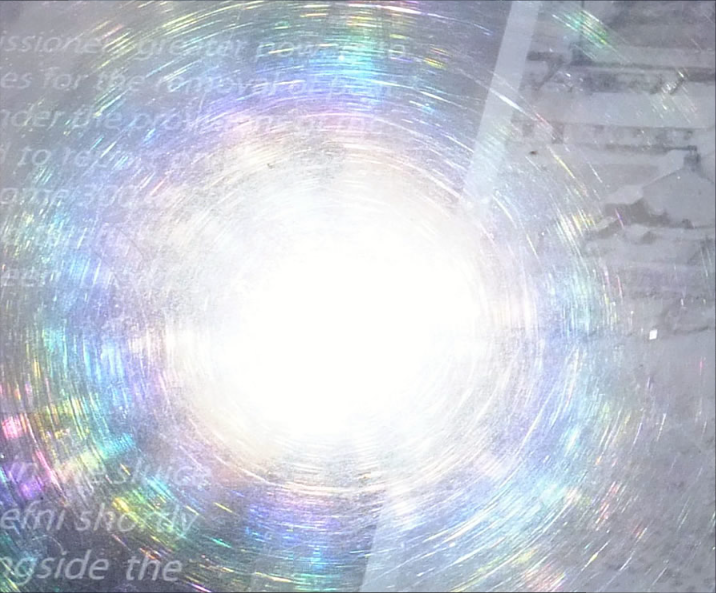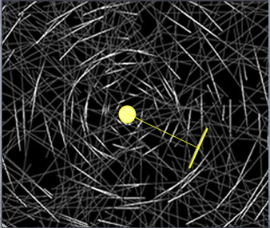Scratched Perspex, light rings and diffraction - OPOD
Scratched Perspex, Light Rings, and Diffraction: Unveiling the Wonders of Optical Phenomena
Have you ever noticed intriguing light rings surrounding objects or circular diffraction grating colors appearing unexpectedly? These mesmerizing optical phenomena can be observed in various scenarios, from wet branches and spider webs to scratched pans. In this article, we will delve into the captivating world of scratched Perspex, light rings, and diffraction, uncovering the science behind these enchanting visual displays.
Light Rings: A Play of Reflection and Perception
When cylindrical objects or linear scratches are present, light can reflect off them in multiple directions. However, only the scratches perpendicular to the line pointing towards the light source reflect directly into our eyes. As a result, these "lit" scratches appear to form circles around the source of light, creating what we perceive as light rings. Our brains are wired to find patterns and delight in the intricate circular formations that arise from this phenomenon.
- Light rings can be observed in a variety of settings, such as wet or frozen branches, spider webs, hairs on seed heads, and even scratched saucepans.
- The interplay between reflection and perception gives rise to these captivating circular patterns.
Unveiling the Science of Diffraction Colours
Beyond the enchanting light rings, scratched Perspex sheets can also exhibit another captivating phenomenon: diffraction colors. While the larger scratches contribute to the formation of light rings, there are also much finer, closely spaced scratches that play a role in creating circular diffraction gratings.
- Imagine the shimmering colors that flash across a DVD or CD as it is tilted. This is another example of a circular grating displaying diffraction colors.
- Regularly spaced scratches on a surface scatter incoming light, causing it to diffract into outgoing waves.
- The individual wave crests align in specific directions, resulting in the appearance of first, second, and higher order diffraction fringes.
- The alignment of these fringes is dependent on the wavelength of the light, meaning that when white light illuminates the scratches, we observe a captivating array of spectra.
The Intricacies of Scratched Perspex
The scratched Perspex sheet captured in the images showcased in this article unveils the hidden beauty of these optical phenomena. The scratches on the Perspex must be evenly spaced to produce multiple orders of spectra, indicating the precision with which these scratches were unintentionally created.
- The images provide a visual representation of the scratched Perspex sheet, surrounded by light rings and exhibiting circular diffraction grating colors.
- The Perspex sheet's intricate pattern of scratches interacts with light, revealing a captivating display of colors and patterns.
Appreciating the Complexity of Nature's Optical Play
As we explore these optical phenomena, it becomes clear that nature's intricate play with light and surfaces can create mesmerizing visual displays. From the delicate spider webs glistening with light rings to the scratched Perspex sheet adorned with diffraction colors, we are reminded of the complexity and beauty that surround us.
- Optical phenomena serve as a reminder of the intricate interplay between light and matter in our natural world.
- Through observation and understanding, we can appreciate the complexity and beauty inherent in these visual displays.
Conclusion: Unveiling the Mysteries of Optical Phenomena
In this detailed exploration of scratched Perspex, light rings, and diffraction, we have delved into the captivating world of optical phenomena. From understanding how light interacts with scratched surfaces to appreciating the mesmerizing patterns and colors that arise, we have unveiled the hidden wonders that surround us.
- Optical phenomena such as light rings and diffraction colors provide a glimpse into the intricate workings of light and matter.
- By unraveling these mysteries, we gain a deeper appreciation for the beauty and complexity of our natural world.

Scratched Perspex ~ Graham Stephen ( GeoTopoi LustreBox ipernity ) inadvertently caught a reflection of the sun when photographing a perspex covered panel about the village of Malltraeth, Anglesey, Wales. The sun's reflection is surrounded by light rings plus several orders of circular diffraction grating colours. Image ©Graham Stephen, shown with permission

Light Rings
We see light rings from wet or frozen branches in a wood, from spider webs in grass, from the hairs of seed heads, from a scratched saucepan.
In all these, cylindrical objects or linear scratches reflect light. The scratches are in all directions but only those perpendicular to a line pointing to the light source reflect to the eye. As a result, the 'lit' scratches appear to form circles around the light. The brain delights in making patterns!
Below: A computer simulation. Only scratches perpendicular to the light reflect to the eye.


Diffraction Colours
In the light rings we see large discrete scratches illuminated. But evidently this perspex sheet also has much finer closely spaced scratches. Like the larger ones they are in all directions but those in a 'light ring alignment' form a circular diffraction grating.
A more familiar circular grating is a DVD or CD that flashes with colours as it is tilted.
At left, regularly spaced scratches scatter light into outgoing waves. The individual wave crests line up in particular directions to give 1st, 2nd and higher order diffraction fringes. The directions are wavelength dependent and so with white light illumination we actually see a set of spectra.
The perspex scratches must be quite evenly spaced because 3-4 spectrum orders exist.
Note: this article has been automatically converted from the old site and may not appear as intended. You can find the original article here.
Reference Atmospheric Optics
If you use any of the definitions, information, or data presented on Atmospheric Optics, please copy the link or reference below to properly credit us as the reference source. Thank you!
-
<a href="https://atoptics.co.uk/blog/scratched-perspex-light-rings-and-diffraction-opod/">Scratched Perspex, light rings and diffraction - OPOD</a>
-
"Scratched Perspex, light rings and diffraction - OPOD". Atmospheric Optics. Accessed on November 26, 2024. https://atoptics.co.uk/blog/scratched-perspex-light-rings-and-diffraction-opod/.
-
"Scratched Perspex, light rings and diffraction - OPOD". Atmospheric Optics, https://atoptics.co.uk/blog/scratched-perspex-light-rings-and-diffraction-opod/. Accessed 26 November, 2024
-
Scratched Perspex, light rings and diffraction - OPOD. Atmospheric Optics. Retrieved from https://atoptics.co.uk/blog/scratched-perspex-light-rings-and-diffraction-opod/.